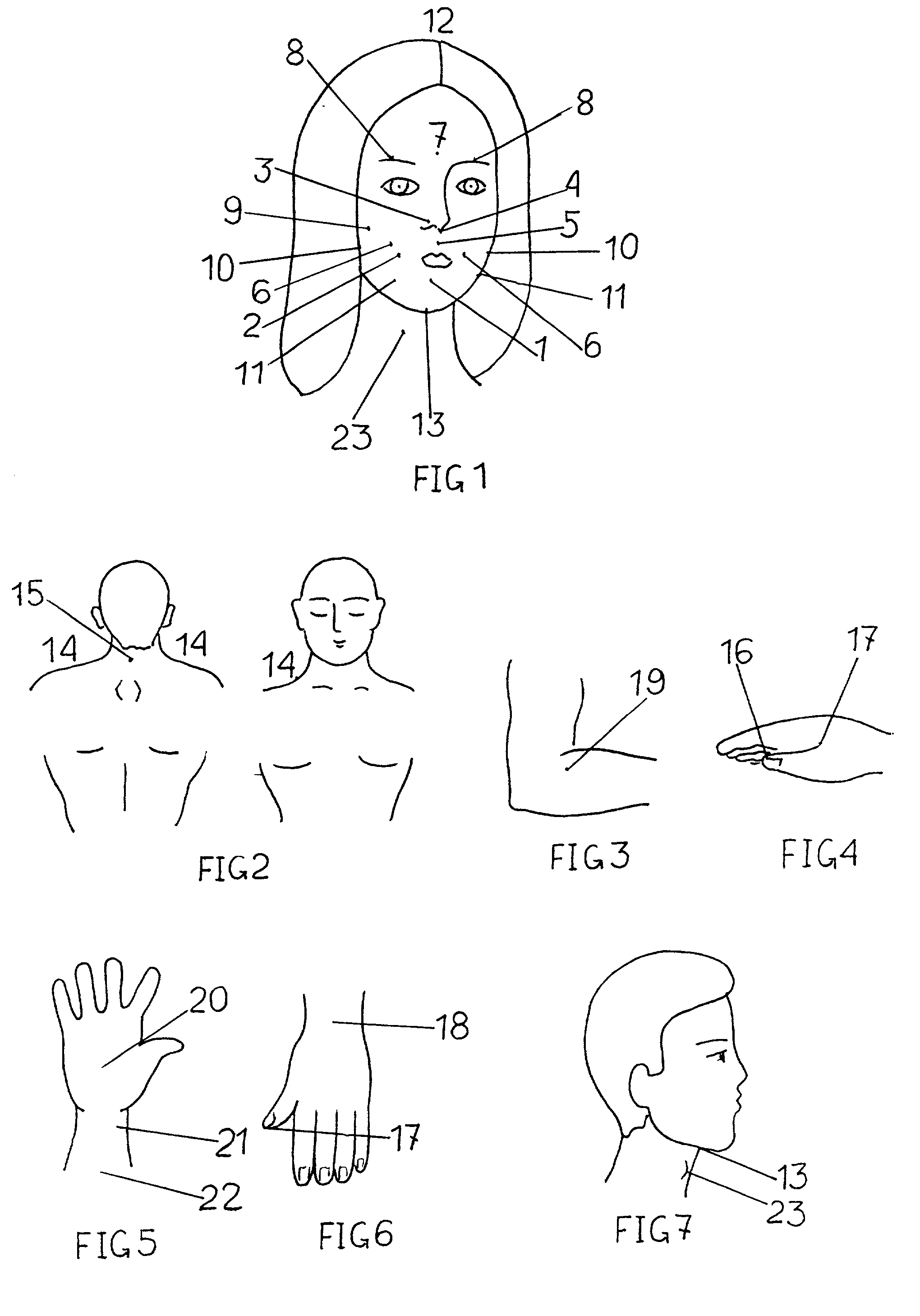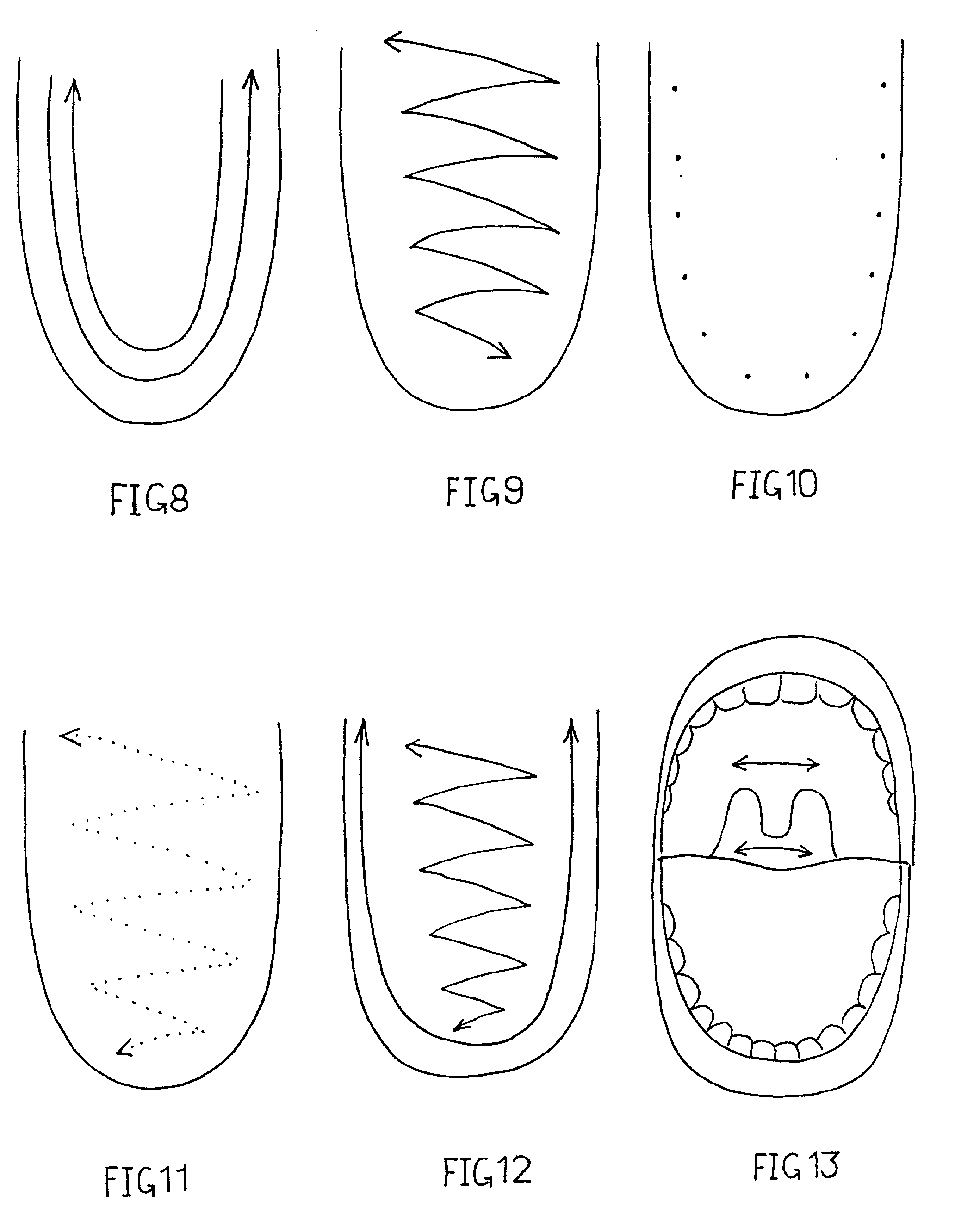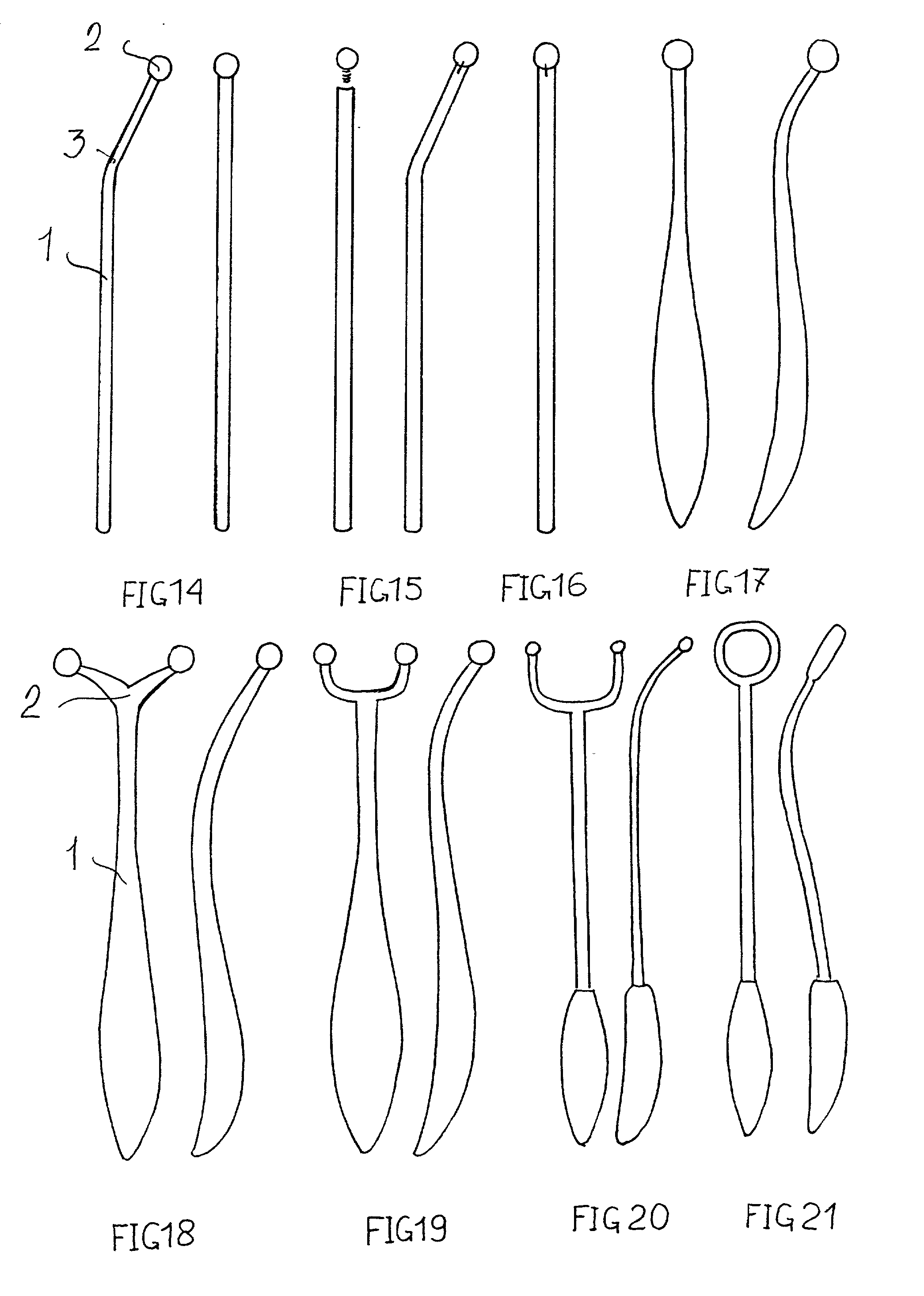Method of restoring speech functions in patients suffering from various forms of dysarthria, and dysarthria probes
- Summary
- Abstract
- Description
- Claims
- Application Information
AI Technical Summary
Problems solved by technology
Method used
Image
Examples
example 1
[0037] Patient S., 26, admitted to the speech department of a daytime hospital, diagnosis: pseudobulbar spastic rigidity dysarthria.
[0038] A volume of movement of the tongue, lips and the jaw increased on the third day of treatment.
[0039] A tempo of speech accelerated on the seventh day of treatment, the lips became more mobile, the tongue began to rise up. The articulation--mimic mobility of muscles improved.
[0040] On the 15th day the tip of the tohgue began vibrating, the patient began pronouncing the sound "r". The restoration training resulted in positive dynamics: speech breath considerably improved, speech expiration prolonged, timbre improved, the voice became more modulated.
example 2
[0041] Patient E., 24, diagnosis: infantile cerebral paralysis, dysarthria of spastic-paretic form. Speech therapy examination: the amimic face, increased salivation. Restricted scope of movements of the tongue, lips, insufficient amplitude of movements. Movements are performed in slow tempo, quickly exhausted; the tone of tongue muscles enhanced. Speech pronounciation aspect: reduced vowels, indistinct, unclear sibilants replaced with dental sounds, speech intelligibility reduced because of a phonetic defect. Vocabulary of household words, phrase speech not formed. Superficial speech breath; short, weak expiration; an expiration force quickly exhausted in a speech flow, turns into speech on taking breath. Voice: sonorous, loud cry. Speech phonation: weak dull, monotonous, nasalized, exhausted; speech: toneless, with no melodical tint.
[0042] A complex treatment, as proposed, was used. Positive dynamics was observed. A considerable improvement in the state of pronouncing aspect of sp...
example 3
[0044] Patient I., 23, diagnosis: childbirth aftermath, subcortical dysarthria. Speech therapy examination: enhanced salivation, restricted scope of movements of the tongue and lips. Enhanced tongue tone. The pronouncing aspect of speech: articulation of vowels disturbed more than the consonants. Individual words and sounds can be pronounced correctly but at the moment of hyperkinesia theseturn out to be much distorted and unintelligible. The tempo, rhythm and melodics of speech upset. Voice constrained, sharp, hoarse, ranging in timbre and loudness. Sometimes voice "dies out", as it were, turning into a whisper.
[0045] A complex method of treatment was used. Positive dynamics after a course of treatment: a marked improvement of the pronouncing aspect of speech. Hyperkinetic manifestations in the muscles of articulation organs disappeared. At the same time there are some defects in pronunciation of sounds, more specifically, fricative sounds and affricates, insufficient expressivenes...
PUM
 Login to View More
Login to View More Abstract
Description
Claims
Application Information
 Login to View More
Login to View More - Generate Ideas
- Intellectual Property
- Life Sciences
- Materials
- Tech Scout
- Unparalleled Data Quality
- Higher Quality Content
- 60% Fewer Hallucinations
Browse by: Latest US Patents, China's latest patents, Technical Efficacy Thesaurus, Application Domain, Technology Topic, Popular Technical Reports.
© 2025 PatSnap. All rights reserved.Legal|Privacy policy|Modern Slavery Act Transparency Statement|Sitemap|About US| Contact US: help@patsnap.com



